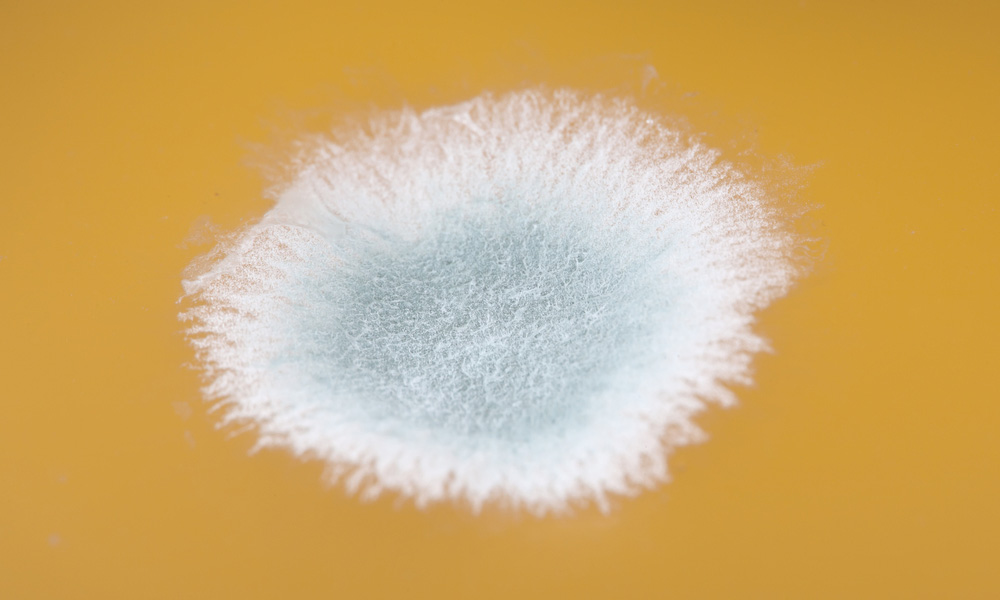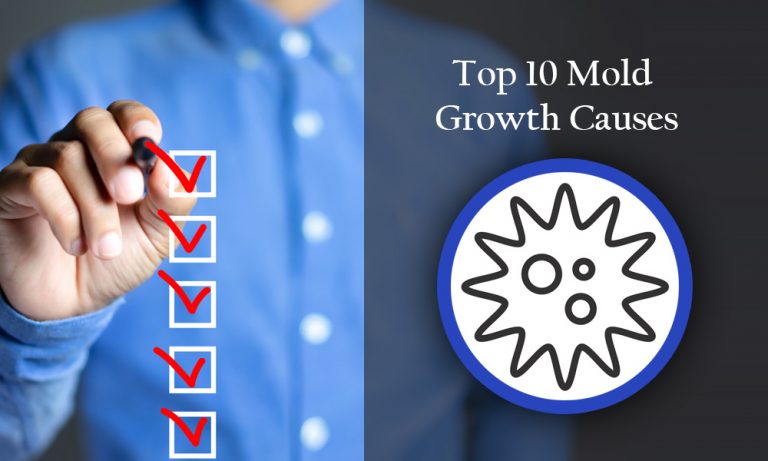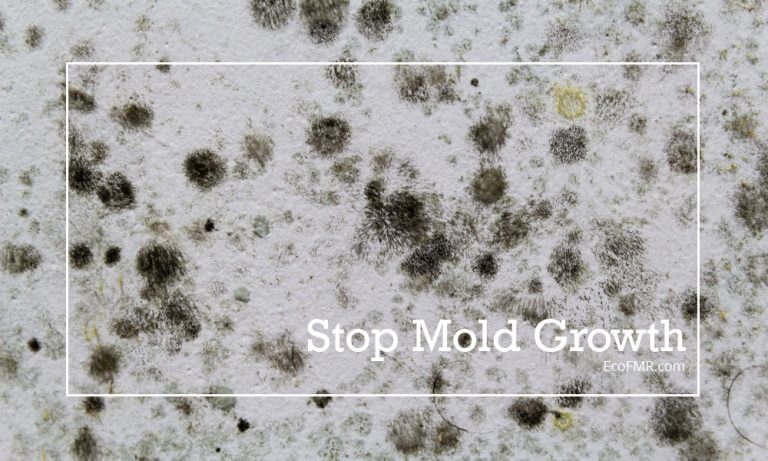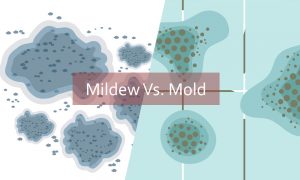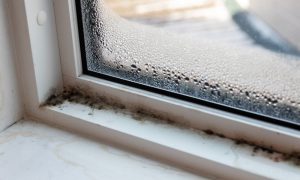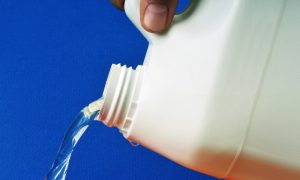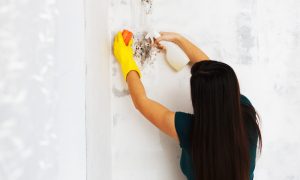White mold is a common sight in households with damp and humid conditions. It is easy to spot, as you will notice a distinctive white film on surfaces that have been left damp for a long time, such as carpets and wallpaper. Some people believe that white mold is dangerous, but there is not enough evidence to support this claim.
Prolonged contact with white mold can cause health issues or even structural damage. It is essential to understand what causes white mold and prevent it from occurring to avoid these problems. This article will cover everything from the most common types of white mold down to prevention and how to stop them before they cause any damage.
What is white mold?
White mold is a fungus belonging to the family of molds. Its texture is similar to that of mushrooms, which are also fungi. White mold is very similar in appearance to a thin layer of silk or cotton on surfaces that have been left damp for a few days.
This mold is called white because it can grow on damp and dry surfaces without changing color or texture due to its hyphal structure. It has filaments called hyphae which extend from the main body of the fungus. These hyphae have capillaries that allow them to absorb as many nutrients as possible from their surroundings.
Like any other mold, white mold also prefers damp and humid conditions. The fungus prefers these conditions because it is an osmophilic organism that needs a moist environment to absorb nutrients.
White mold spores are usually found in soil, hay, straw, paper products, cardboard boxes, drywall, clothes, shoes (leather), or wood, indicating that there may be white mold in any location where organic materials are present.
What does white mold look like?
When they first develop, white mold is hard to distinguish from any other white film that forms on surfaces like paint, salt deposits, and dust. Fortunately, white mold leaves a distinctive and visible trace of itself which can help you identify it before it advances too far.
It begins with the appearance of fluffy points, which grow more significantly by extending their branches towards nearby objects to absorb nutrients. This growth is fast enough for us to see it with the naked eye, but if you look closely enough, you will notice that this white fungus also produces spores.
These microscopic structures are the main reason why white mold can spread so rapidly. The spores are made by structures called sporangium, which is found underneath the capillaries, and they can be ejected to a reasonable distance when the fungus is mature.
What causes white mold?
Many conditions favor the formation of white mold in your home. The development of white mold requires three crucial elements:
- Moisture
- Temperature, and
- Organic matter
If you have all three of these conditions in your home, then it is highly likely that you will grow white mold.
White mold is generally caused by fungi that feed on moist substances like paintings, wallpaper, drywall, leather, or fabrics. They utilize the moisture in the air and any organic materials to grow into colonies commonly referred to as mildew. Damp clothes, moist leather, furniture, bathroom tiles, cupboards, and even carpets can be affected by white mold.
What causes white mold to grow on plants?
Plants are susceptible to humidity levels, so if the humidity around your home is high, it is no surprise that you will have white mold growing on plants. The best thing you can do is keep the soil moist but not too wet by watering them about once a week to avoid attracting moisture to your plants.
Is white mold dangerous?
The white mold itself is not dangerous-it is pretty harmless (although that does not mean it is OK to allow it to grow in your home). It can be dangerous when combined with other allergens. For example, if someone allergic to mold comes in contact with white mold, they are likely to experience symptoms such as sneezing and mild skin irritation (such as bumps on the skin or a rash). White mold can also exacerbate respiratory problems such as asthma. It is best to clean up the area right away and get rid of it before it becomes too much to handle.
How to prevent white mold?
The best way to prevent the spread of white mold is by removing any conditions which encourage its growth.
First of all, keep your home as dry as possible by using a dehumidifier and a fan in areas that tend to accumulate moisture, like laundry rooms or bathrooms. If you can, open up your curtains on the sunny side of the house and keep air circulating throughout.
If you cannot avoid humidity in your home, then make sure that all surfaces are properly sealed and cleaned at least once a month with white vinegar and water solution, so they do not get stained. Keep any areas of your home close to water sources free of dust, and use a dry mop on tiled floors.
On the other hand, white mold is not harmful unless you are susceptible or immunocompromised; nevertheless, if left unchecked, it can cause significant damage to your home’s structure. You may need professional help to remove it from walls or surrounding areas depending on the extent of the mold growth.
Tips to prevent white mold from growing in your home
- Avoid excessively humid rooms.
- Monitor moisture levels in your home.
- Fix all sources of leaks to ensure there are no damp spots.
- Keep air vents free of debris for proper ventilation in your home.
- Remove organic material like wood, paper, and food waste that could be feeding white mold growth in your home.
- Periodically clean out faucets or drains in your home because moisture can seep into the walls.
- If you have a crawl space, install vents to ensure air circulation.
- Keep your heating unit free of debris to not become moist and promote mold growth.
- If you have a basement, ensure that it is well ventilated.
White mold can be quite alarming because it often resembles other dangers like black mold or toxic mold. However, white mold can be removed from surfaces easily because it is not difficult to identify.
How can you get rid of white mold?
Some of the easy DIY methods to get rid of white mold are as follows:
- Bleach it away with a mixture of bleach and water applied with a brush to the affected areas. Mix 1 tablespoon of bleach with 2 cups of water, then use a sponge to wipe the affected area until it is spotless. Remember to wear rubber gloves and always follow the instructions on the label of your cleaning products.
- Duct tape over the area affected, then peel it off to remove all traces of white mold after one or two days. Make sure you wear heavy-duty rubber gloves for protection.
- A strong, 10% solution of sodium hypochlorite applied to affected areas works well too. Combine 6 oz of household bleach with 6 cups of water, then use a spray bottle to apply the mixture to the area in question. Remember to wear protective gloves and goggles at all times when handling bleach (Reference: https://pubmed.ncbi.nlm.nih.gov/16159635/).
- You can also use a product called Moldzyme, which is specially formulated to kill and remove any mold or mildew. This spray is completely safe for humans and animals, so you do not have to worry about your kids and pets coming in contact with it while working on its job. Just remember to read the instructions on the label of any cleaning product before you decide to use it.
- You can also use a rubbing alcohol solution mixed with some dish detergent if you do not have any bleach available. Mix 2 parts isopropyl alcohol with 1 part dish-washing liquid, then apply the solution using a spray bottle. Wait for five minutes before wiping it off with paper towels.
Note: You should never mix bleach with ammonia or any other type of cleaner containing fumes that are hazardous to humans.
Also read: Natural and DIY methods to get rid of mold from your home
If you think white mold has spread beyond surfaces like carpet or wallpaper, it is essential to check for any signs of moisture because this is often an indicator that the root cause of the problem has not been resolved.
Finally, if the mold growth is beyond your capabilities, you can always hire professional contractors to take care of the problem for you.
White Mold vs. Black Mold
What are the differences between the two types of molds, and which type is more dangerous for humans?
The difference between the two types of molds is their color. White mold is a bit insidious because it is often hard to spot before it is too late. On the other hand, black mold leaves a dark-colored film on surfaces and sticks out like a sore thumb. In both cases, if you see any discoloration in your home at all that makes you think there is a mold problem somewhere, do not wait to clean it up before it becomes worse.
Black mold is more dangerous than white mold, and it is probably the reason why most people know what mold is. This type of substance is often found in homes after a water damage incident because of leaking roofs or burst water pipes. It can be highly hazardous to your health if inhaled, so it is always best to take it seriously and call in professionals if you are unsure how to get rid of it.
White mold is more common than black mold but less dangerous. This type of substance is not life-threatening, but it can be unsightly. It is crucial to prevent this problem from occurring by keeping your house clean and dry. If it does start to spread, you can probably get rid of it yourself by using one of the DIY methods.
Remember to follow the instructions on the label of your cleaning products, and never mix bleach with ammonia or any other type of cleaner containing fumes that are hazardous to humans.
Types of white mold
While there are several different types of white mold, the most common ones are given below:
- Cladosporium – This type of white mold is prevalent and grows everywhere and on everything due to the current moisture and humidity levels in houses. It is best to either get rid of the sources of moisture or use a dehumidifier to dry the air.
- Alternaria – This type of mold is only dangerous to those with weak immune systems, such as children and older adults.
- Aspergillus – This fungus grows above the ground on damp, organic stuff like grass and dirt that has been soaked by too much rain or natural humidity. It grows indoors if there are plants present in the house.
- Penicillium is one of the most common fungi found indoors because it quickly spreads through the air, water, and soil. It prefers cooler temperatures but can grow in any condition. It can be dangerous to humans with weak immune systems or respiratory problems.
- Fusarium – This type of mold is often found in homes exposed to high humidity levels or poorly ventilated places. It prefers low light, so it is even possible for you to find it growing on windowsills.
- Chaetomium – This fungus grows best in wet areas indoors where there is little air circulation. It is the main reason why bathrooms are prime locations for mold to develop.
- Mucor – This is one of the most dangerous types of white mold found indoors. It requires very high humidity levels to grow, so it usually occurs in bathtubs, toilet bowls, and behind wallpaper with little airflow.
- Rhizopus – This type of mold is commonly found in moist, organic substances like food and plants. It loves hot, humid conditions, so it is not uncommon to find it growing in basements.
- Aureobasidium – This fungus is also very common and grows on dead plants, which explains why you will be more likely to find it in poorly ventilated areas like bathrooms.
Where can you find white mold in your house?
White mold is found almost anywhere in your house. Let us look into each of these.
White mold in basements
Usually, basements are much cooler and more humid than the rest of the house. It is the ideal condition for mold to grow and spread its spores. There are many reasons why your basement might have white mold growth. Condensation on the walls or floors, dampness in surfaces due to basement leaks, cracks in the wall, leaky pipes, and even blocked gutter downspouts can cause mold to grow. While basement mold is usually caused by water damage or other structural problems, the shelves and suitcases you store in your basement provide an ideal environment for mold to develop.
White mold in bathrooms
Bathrooms are particularly susceptible to white mold growth because of moisture or leaks from showers, bathtubs, or any areas with water leakage. If you see white mold on the humid walls within your bathroom, it is probably caused by poor ventilation. A fan would help remove excess moisture in the bathroom and prevent mold from growing. Also, avoid placing wet items in your bathroom, such as towels, on the floor because they cause mold to grow. You can prevent white mold by wiping down walls with vinegar from time to time.
White mold in kitchens
Kitchens are another room that usually accumulates much white mold because most kitchens have moisture issues due to water in the air. For this reason, it is vital to make sure you use your stove regularly, take out the trash regularly, and never let it get too humid in your kitchen. Kitchen surfaces such as countertops, cupboards, or walls next to your sink can develop white mold if they are not adequately cleaned and dried after each use. If you notice a thin film on these areas of your kitchen, wipe them down with a solution of water and vinegar – it will help prevent white mold from developing.
White mold in laundry rooms
Unlike attics and basements, clothes dryers are hard to clean because they are usually confined. The calcium buildup around your washing machine or clothes dryer can be a breeding ground for white mold and the laundry baskets that you keep. You can add moisture control granules to keep your laundry room dryer.
White mold in attics
Mold grows in attics when there is a moisture problem. Attics are often cooler and more humid than the rest of the house because hot air rises and escapes, taking excess heat and moisture. This could be a major cause for your attic to develop white mold.
White mold on windows
Window sills and woodwork are sometimes attacked by various fungi, which cause the well-known white growth – often unattractive and harmful. The best way to deal with this problem is to keep all woodwork thoroughly painted or varnished since the paint film offers adequate protection against these molds.
White mold in carpets
Carpets are usually made of synthetic materials which are mildew resistant and can stand up well to humidity and moisture. However, if you notice white mold on the carpet, it is because you have left wet clothes or towels lying on the carpet for too long. When mold starts to form, dry your clothes and wipe down the carpet as soon as possible. However, if you notice white mold growing in high traffic areas of your home, like near doorways, consider investing in an air purifier.
White mold in crawl spaces
Crawl spaces are typically cramped and never get much circulation. The possibility of white mold growing in your crawl space is very high. If you have a crawl space, make sure you install vents to allow airflow. Also, seal off the area with plastic sheeting to stop crawl space soil from getting wet. If your crawl space is damp, white mold may begin to grow.
White mold on wallpaper
Wallpaper can be a breeding ground for white mold if it is placed in the wrong area. Areas with high humidity and moist conditions, such as bathrooms and kitchens, can cause wallpaper to become damp. However, your best option to prevent white mold from growing on your walls is to ventilate all areas of your home correctly.
White mold on drywall
Drywalls are made of gypsum plaster which is known to be white mold’s favorite food source. White mold on drywall can lead to structural damage to your wall if it is left untreated. However, the best way to prevent white mold from eating away at your drywall is not to run an air conditioner during humid weather and to ensure the room is completely dry before turning on your air conditioner again.
White mold on couches
High humidity levels can cause painted woodwork, such as your couch, to become damp and attract white mold over time. This mainly happens when you fail to ventilate high traffic areas such as living rooms or dens where many people come in and out of the room daily.
White mold on clothes, socks
White mold on the surface of clothes is typically harmless, but it can cause your clothes to smell if left untreated. The best way to get rid of white mold on clothing is to mix one part hydrogen peroxide and two parts of water. Soak your clothing in this solution for thirty minutes before washing it normally. Alternatively, consider running them through a hot dryer cycle to kill the spores that are present. If the white mold is untouched, it will quickly come off without causing any damage. However, if the white mold is already worn down and has started to flake off, it is best not to risk it because the spores could become airborne.
White mold in a refrigerator
White mold on a refrigerator is normally harmless and can be wiped off without causing any damage. However, the reason why white mold may have grown in your refrigerator is that there might be some source of moisture that needs to be fixed, such as a broken seal or a faulty gasket. Fix this problem to prevent white mold from persisting.
White mold on leather
White mold on leather can be hazardous and potentially cause permanent damage to the object such as shoes, belts, bags, etc. The best thing you can do is wipe it off as soon as possible and then place the item outside in 100-degree heat for at least three hours. Alternatively, use a mixture of alcohol and one part of water to wipe the affected area.
White mold on pillows
Not using a pillow for long can cause white mold to form, especially in a humid climate. The best way to avoid this is to ensure moisture in the air is vented and that your pillows are washed at least once a week in hot water with either chlorine or borax. If the white substance on your pillow does not come off quickly, consider running a clothes iron over the area to fix the problem. The heat from the clothes iron will kill white mold spores and make sure they never come back to life later on.
White mold in bedroom
High humidity levels in bedrooms are a common cause for white mold because people spend up to a third of their time sleeping in this room, making it an ideal place for mold to grow. If you notice white mold in your bedroom, consider using an air conditioner to ensure this area stays dry and clean during the hot months.
White mold on lawn, garden
High humidity levels will cause grass in high traffic areas to like along sidewalks and driveways to become damp. White mold will use this damp grass as a source of food to grow and spread. The best thing you can do is mow your lawn regularly and never let it get too long.
White mold on ceilings
Some people have white mold on their ceilings because the insulation in the roof can become damp from high humidity levels, which allows for moisture to seep into the insulation. Prevent moisture on your ceilings by keeping your home clean and adequately ventilated at all times.
White mold on wood, furniture
White mold on a wooden table or floor can be potentially dangerous because it will eventually eat away at the wood and cause severe damage. The best thing you can do is wet a cloth with white vinegar and place it over the area where the white mold has been growing for up to three days. The acetic acid in the vinegar will kill off the mold spores and make sure they do not come back.
White mold on cupboards, cabinets
White mold growing inside the cupboard is almost always caused by moisture getting trapped within. Throw out any contaminated food items and wipe all cabinets with three parts vinegar to one part water. Make sure to also wash these surfaces with soap and water right after you have finished cleaning them.
White mold on paper, books
You can usually wipe away most white mold found on paper with a cotton ball soaked in vinegar. If the amount of white mold is small, you may be able to pick it off with your fingernail or tweezer. If this does not work, consider running the paper through a hot clothes iron until the white mold is completely gone.
White mold in your living room
It is normal to find plenty of dust beneath your sofa or behind storage boxes that are tucked away in the corner of your living room. The reason for this is because high humidity levels attract dust like a magnet. This can be easily prevented by simply opening your windows up for about an hour each day.
Conclusion:
White mold is not dangerous. Is it unsightly? Yes, definitely. If you have white mold growing on your floors or furniture, you will have to treat it carefully not to damage the material underneath.
Keeping your home clean and dry is the easiest way to prevent white mold from growing in the first place, but you also have to make sure that moisture is not building up around your windows or any other part of your house.
Even if you think that your home is clean, there can be condensation on the inside of your windows or near any other part of your home’s exterior. That is why it is always a good idea to get an energy audit done by a professional to make sure your insulation and ventilation systems are in good working shape.
Also, you should regularly clean and vacuum your carpet and upholstered furniture to remove any food particles that could attract pests. If you do not, then it is no wonder that your home might end up with white mold in the future.
If you want to ensure that your home will remain white-mold-free, remember to keep your home clean, dry, and free from humidity.
This article was originally published in Sep-2021 and was last updated in Dec-2021.
Author: Kenny

